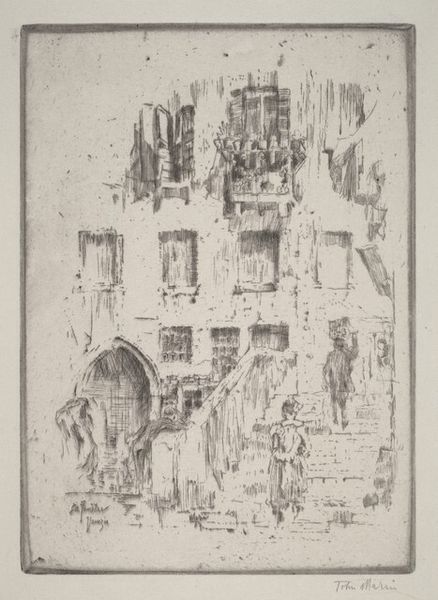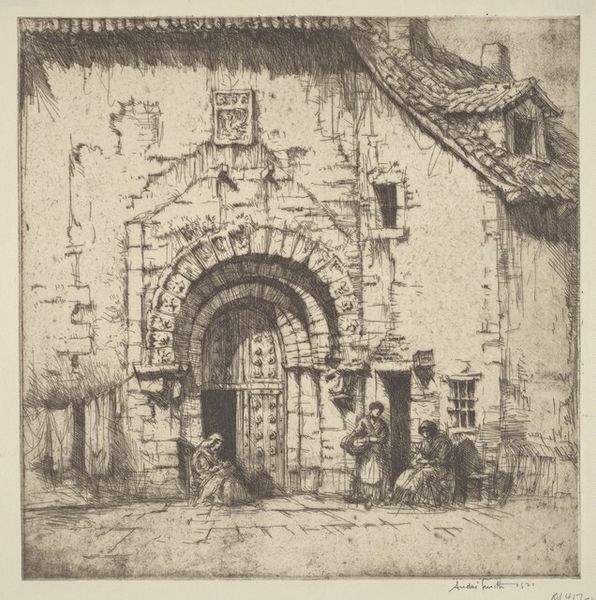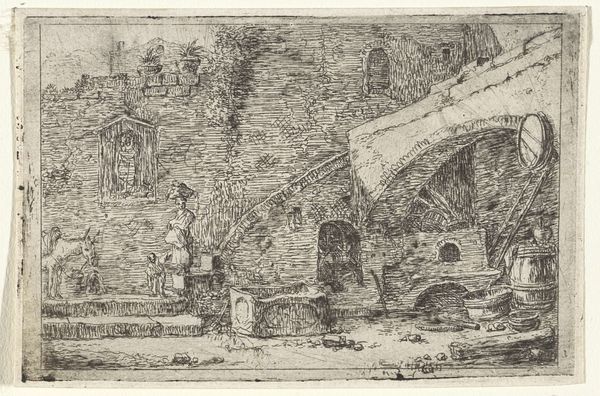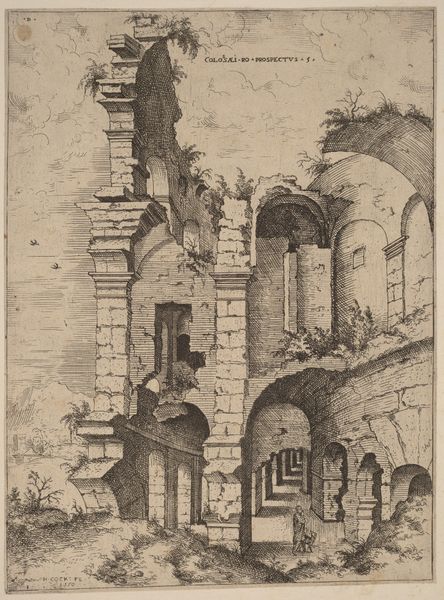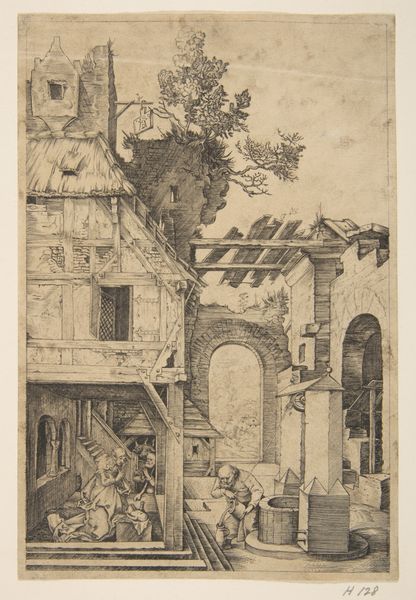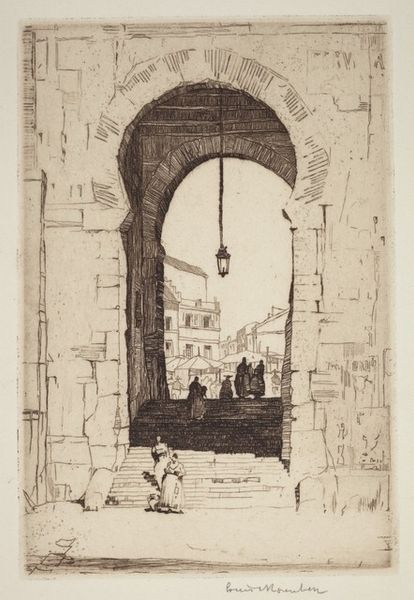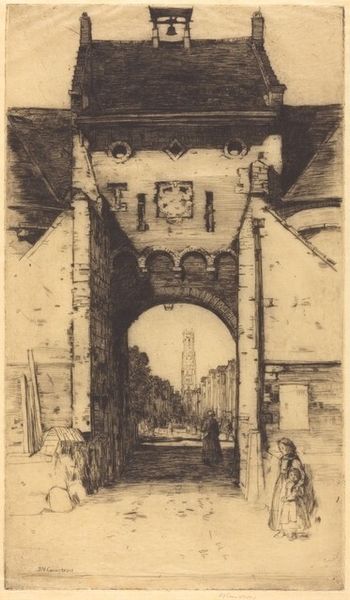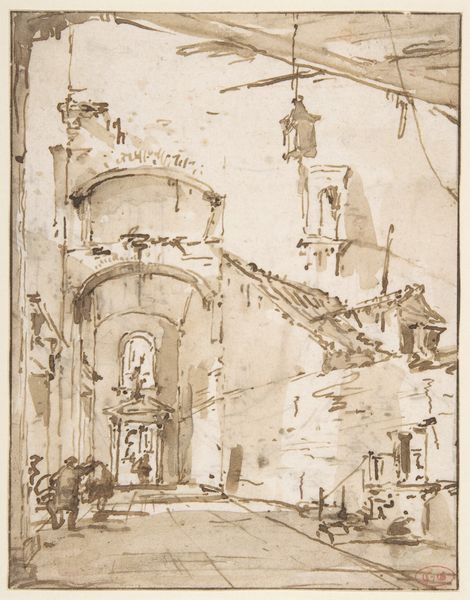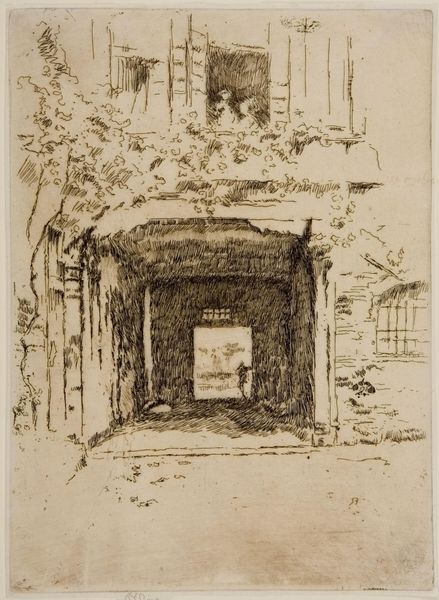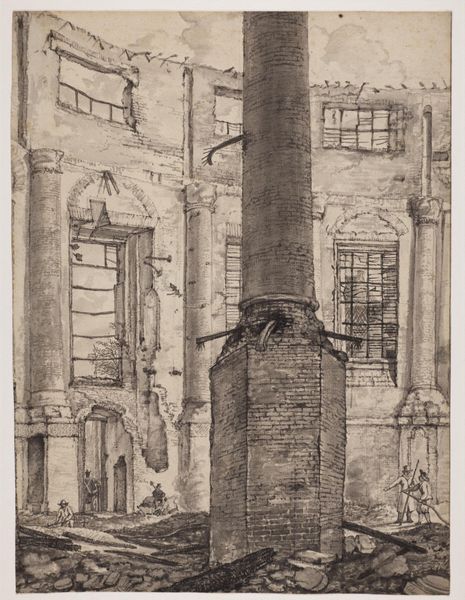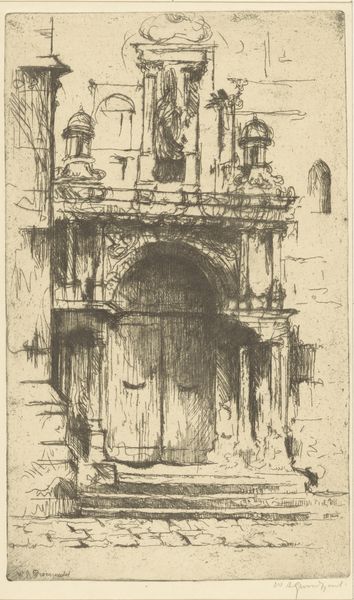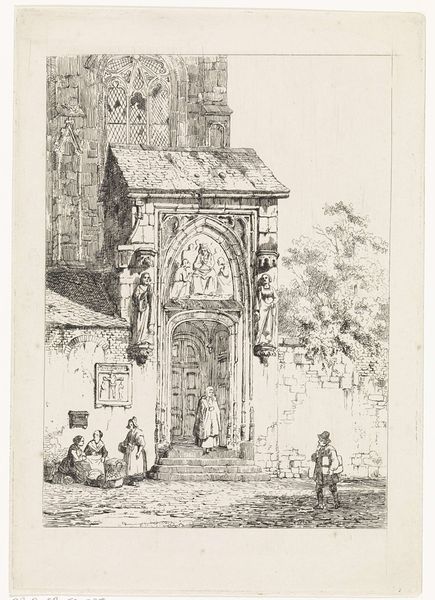
Copyright: National Gallery of Art: CC0 1.0
Editor: Here we have Jules André Smith’s "The Gate of the Flowered Lintel, Toledo" from 1921, an etching in ink. I'm struck by how the detail pulls you right into what feels like a bustling little scene from the past. What are your initial thoughts on this cityscape? Curator: Well, it immediately raises questions about whose Toledo is being represented here and for whom. Smith, as an American artist, is engaging with a European locale steeped in history. It's from the Arts and Crafts movement, known for its idealized views, which ties into a larger narrative of Western artists representing foreign cultures. How does this representation reinforce or challenge existing power structures? Editor: So you’re saying there’s a political dimension to the depiction itself? Curator: Precisely. Think about who gets to create these images and how they circulate. The “flowered lintel” suggests a romantic, almost exoticized vision of Toledo. How does that compare with the socio-economic realities of the time? Was this image meant for an American audience seeking a particular narrative about Europe? Editor: I never thought about it that way! I was so focused on the technique, I missed the potential for commentary about cultural exchange, and even perhaps, tourism. Curator: Exactly! Consider too the role of the etching itself. It’s a print, intended for reproduction and distribution. Who had access to these images? And what stories did they tell about Toledo? Perhaps even served as advertising of a kind. What new questions do you have? Editor: It's interesting to think about what other narratives might be missing from the image. It definitely gives me a lot to think about regarding the artist's perspective and the broader context. Curator: It's important to consider these kinds of representations in light of social and political history. Hopefully, you will look for the unheard voices in the image's silence, so to speak.
Comments
No comments
Be the first to comment and join the conversation on the ultimate creative platform.
